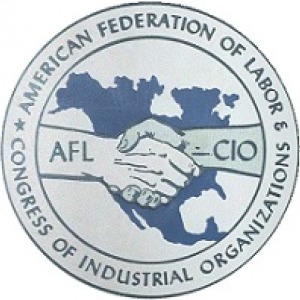Editor’s Note: Brian Hunt is a member of Local 638 in New York City
New York, NY – The American labor movement has been shaped by many factors throughout its history. Geopolitical factors, as well as economic factors domestically, have changed the landscape in which American workers struggle to expand their rights to collectively bargain as well as live a life of dignity as provided to them by the democratic process found within the fabric of strong labor unions.
Unfortunately, not all areas of the workplace are fully protected by strong legislation. The National Labor Relations Board [NLRB], for example, was ideally designed and created as a measure to prevent disruption of commerce and economic tension between worker and employer, not fundamentally to protect workers themselves.
Fundamentally, collective bargaining challenges tyrannical workplaces by democratizing the workforce, challenging inequality, and providing basic human needs for American workers. The practice of collective bargaining even reaches beyond the workplace and has been conceptualized as well as utilized in areas of economic development and social endeavors as well as corporate business structures. Working to expand the process of collective bargaining is key to American workers competing with powerful forces set out to tilt the scales of power against workers. In doing so, lessons have been learned during the bargaining process that needs to be recognized as to not lose fundamental power as a workforce in the process.
An example of this can be seen in the Railway Labor Act of 1926, in which workers positioned themselves to gain the ability to choose their own representatives during negotiations while conceding their right to strike. Giving away fundamental strengths that the power of the labor market relies on is a mistake that weakens labor for years to come. Workplace power can shift and change depending on geopolitical and economic circumstances, and needs to be utilized in favor of the working people and protected at all costs.
Globalization of the international economy has eroded the ability of state actors to govern the workplace autonomously and leaves gaps that outside economic forces tend to fill at a heavy cost. This burden is considered to be a “race to the bottom’ with existential possibilities facing domestic workers that have little armor left to defend themselves on this stage.
In the early 20th Century, fundamental ideas of what the workplace even was began to change dramatically. Fordism brought with it new models of production that very much changed the role of craft unions and factory workers. Over a period of time, these changes seemed to have eventually granted workers access to new methods of organizing and utilizing their power over production methods to control and influence large-scale change.
Today, we face drastic changes as well. Since the Second World War we’ve seen and dramatic rise and decline of Union involvement, wage stagnation, and degradation of the quality of life of the American worker. However, with the continuous efforts made by smart labor unions, their leadership, and the utilization of organizing methods by strong, diverse, and educated memberships across the country, it is very likely the labor movement in this country can cease to be continuously outpaced by financial mechanisms designed by greed to maintain the flow of capital into the hands of very few.



